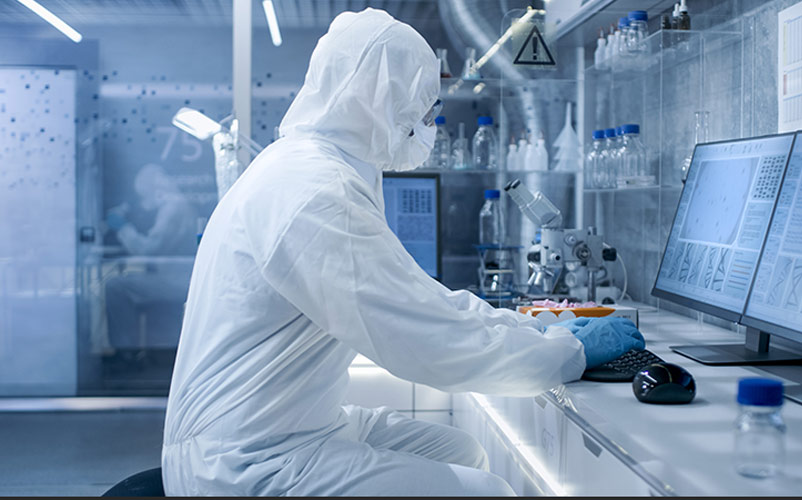The use of the Turbidimetric Method in the LAL test
 The turbidimetric method is one of the methods used for the detection of the end point when endotoxin analysis is performed using the Limulus Amebocyte Lysate (LAL) test. By applying the turbidimetric method, we can conduct the LAL test in a semi-quantitative or quantitative manner.
The turbidimetric method is one of the methods used for the detection of the end point when endotoxin analysis is performed using the Limulus Amebocyte Lysate (LAL) test. By applying the turbidimetric method, we can conduct the LAL test in a semi-quantitative or quantitative manner.
The LAL test measures the turbidity formed in a solution due to the coagulation reaction that occurs when the amebocytes extracted from the Limulus Polyphemuscrab enter into contact with bacterial endotoxins. The endotoxins trigger the start of a series of chain reactions that lead to the precipitation of the proteins in gel form. Bacterial endotoxins are very dangerous pathogens, which is why it is important to perform this test on all pharmaceutical and food products as well as any other type of product which is to be in contact with humans or animals and which could lead to intoxication by endotoxins. Gram-negative bacteria are those that release endotoxins when their cellular wall is broken by the defense mechanisms of humans and animals. High levels of cytokines in the blood, which result in the activation of the defense systems, could cause severe respiratory diseases, inflammatory processes and generalised sepsis.
Turbidimetry is an optical measurement type based on the measurement of the loss of transparency in the solutions which occurs when suspended particles appear. This analytical technique allows us to measure the concentration of the analyte responsible for the turbidity by the loss of light transmission passing through the solution. By increasing the concentration of the analyte, a bigger quantity of radiation is dispersed and/or absorbed, and therefore, the intensity of the light measured by the detector is reduced. The equipment used to measure the light that passes through the sample in these analyses is a spectrophotometer, or turbidimeters which are spectrophotometers specialising in the measurement of turbidity. Both instruments are relatively economical and as they are applied in a wide variety of tests, they are available in most research laboratories. For example, in microbiology laboratories, turbidimetric methods are used to control the growth of a cell population.
YOU MIGHT ALSO BE INTERESTED IN: Analytical Methods for the detection of bacterial endotoxins
By applying turbidimetry to the LAL test, we can perform quantitative measurements of the quantity of endotoxins present in an environment, which is proportional to the turbidity generated. The LAL analysis with turbidimetry could have the turbidimetric endpoint method or the kinetic turbidimetric method as the detection method. In the turbidimetric endpoint test, we perform the reading of turbidity for a specific time after the reagent containing the lysate enters into contact with the sample. As the main disadvantage of the method, we can point out handling errors, which are highly frequent and which affect the results, and the need to repeat the whole process from the start if an error occurs affecting the reading since there is only one moment to make the measurement and it needs to be precise. If the turbidity is not read at the indicated moment, the gelation continues and leads to errors when calculating the concentrations of endotoxins. It is for this reason that the endpoint method is not used frequently.
The kinetic turbidimetric method, in turn, is preferred in most cases where the LAL test needs to be performed in a quantitative manner. The most important advantages of this method is the possibility to use plate readers connected to computers which enable automated reading; an error that occurs at a point of a wrong reading does not result in having to perform the whole analysis all over again. This point can be removed when making the calculations; a low limit of detection can be achieved and endotoxins can be detected in a wide range of concentrations. To make the calibration curves and the measurement curves from the LAL test using this method, antilogarithm values of a variable time and antilogarithms of concentration are used and straight lines are achieved in all the range of application of the Beer-Lambert Law. To get a good level of repeatability and precision in the results, it is necessary to control the temperature of the test and to work at the temperature indicated by the manufacturer of the reagents.
A FEW LAL REAGENTS OF THE BRAND PYROSTAR™
 |
 |
 |
| Limulus PS Single Test | PYROSTAR™ ES-F Single Test Vial | Limulus Color KY Series |



